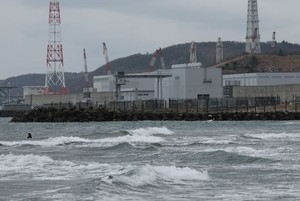THE ASAHI SHIMBUN
September 17, 2021 at 16:55 JST
Despite the number of new COVID-19 cases trending downward nationally, hospital bed occupancy rates in nine prefectures still top 50 percent, making it unsafe to lift the state of emergency there, health experts said on Sept. 16.
“Medical institutions continue to be in a difficult situation in many areas,” warned Takaji Wakita, chairman of the health ministry's advisory board on measures against the new coronavirus.
Wakita, who also heads the National Institute of Infectious Diseases, made the comment at a meeting of the board that day.
“(The number of new cases) continues to drop steadily,” he said, but pointed out that the bed occupancy rates in nine prefectures still exceed 50 percent.
One of the central government's criteria for lifting the state of emergency is that bed occupancy be below 50 percent.
Japan's number of new cases for the week through Sept. 15 was 41.58 per 100,000 people, about half that of the preceding week, according to documents submitted to the advisory board.
All of Japan's prefectures have seen cases fall, except Ishikawa Prefecture, where they rose by 2 percent.
The overall downward trend is believed to be attributable to a decrease in foot traffic after the summer break or fewer outings due to continuous rain.

Hospital bed occupancy rates, however, remain high.
Hyogo recorded a 62 percent occupancy, followed by Saitama Prefecture at 60 percent as of Sept. 15, according to the Cabinet Secretariat.
Chiba, Kanagawa, Aichi, Shiga, Kyoto, Osaka and Okinawa prefectures also exceeded 50 percent.
In Tokyo, the hospital bed occupancy rate for patients with serious symptoms was 76 percent, notably high.
Nationwide, there were a total of 1,743 patients with serious symptoms as of Sept. 15, according to the health ministry.
That figure has also started to fall, but remains high.
The nationwide death toll is trending upward. A total of 63 COVID-19 patients died in Japan on Sept. 16.
The advisory board also expressed fears that infections will surge again due to the long holidays in September and the reopening of schools. It said the medical care system needs to be better prepared based on the assumption that infections will rise further with winter's approach.
The Tokyo metropolitan government’s expert panel voiced similar concerns over patients with serious symptoms.
“Unless the number of COVID-19 patients drops drastically, emergency medical care services will continue to be seriously affected,” the panel said at a meeting also held on Sept. 16.
The same day, the governors of Tokyo and three neighboring prefectures jointly urged residents not to cross prefectural borders and to exercise basic anti-virus measures thoroughly ahead of the long holidays later this month.
(This article was written by Jun Tabushi, Momoko Ikegami and Yoshitaka Unezawa.)




















A peek through the music industry’s curtain at the producers who harnessed social media to help their idols go global.
A series based on diplomatic documents declassified by Japan’s Foreign Ministry
Here is a collection of first-hand accounts by “hibakusha” atomic bomb survivors.
Cooking experts, chefs and others involved in the field of food introduce their special recipes intertwined with their paths in life.
A series about Japanese-Americans and their memories of World War II